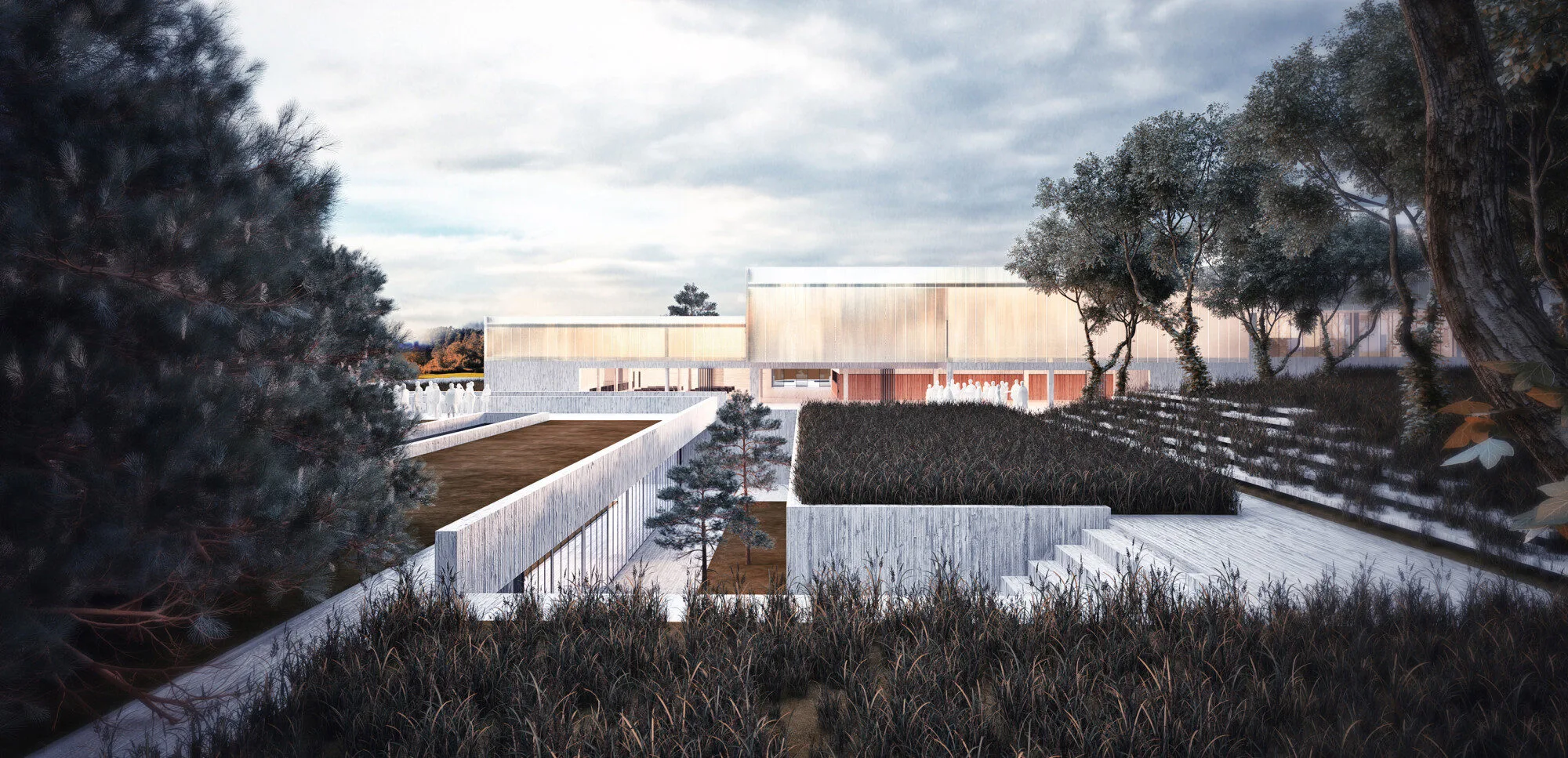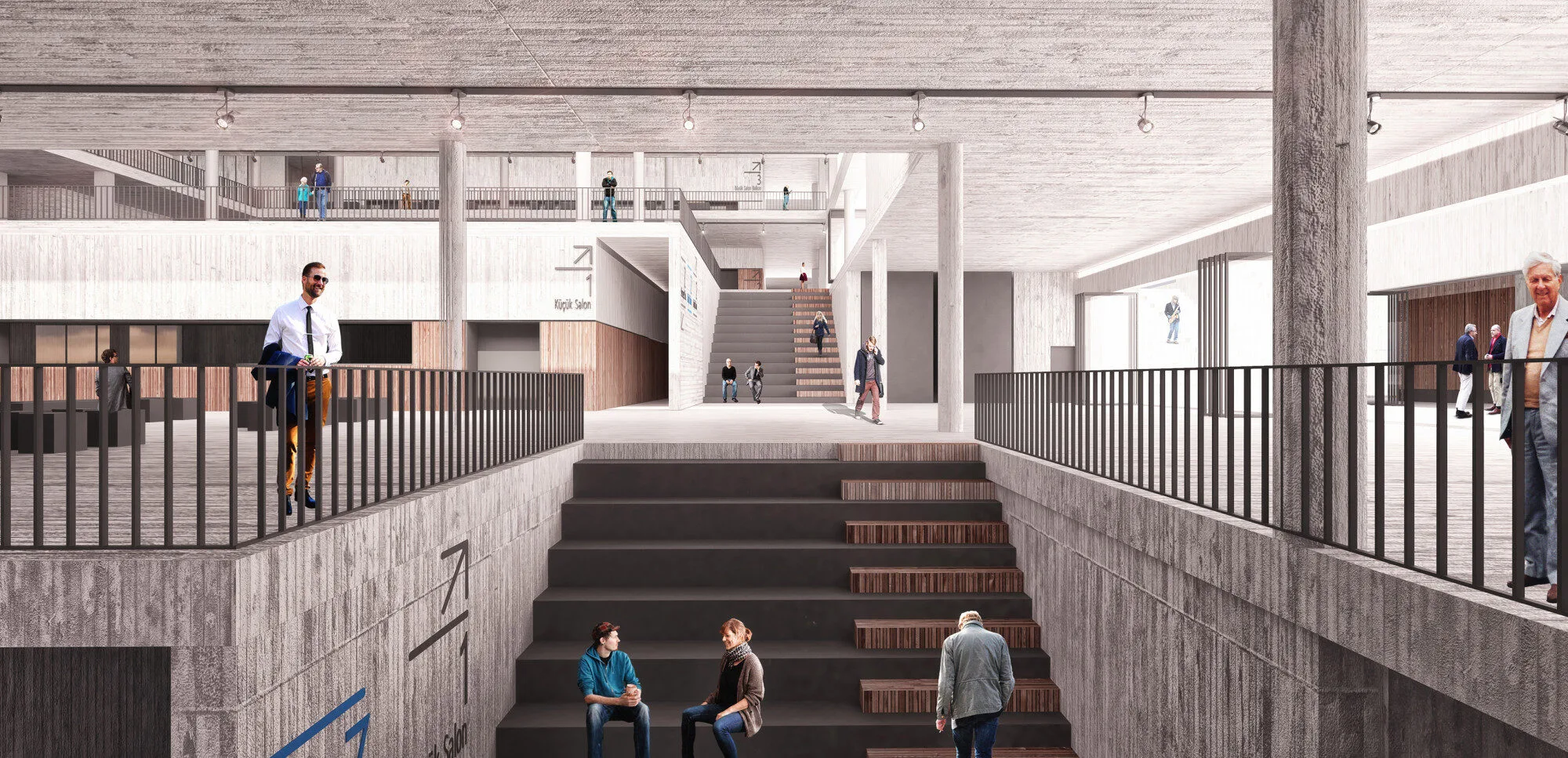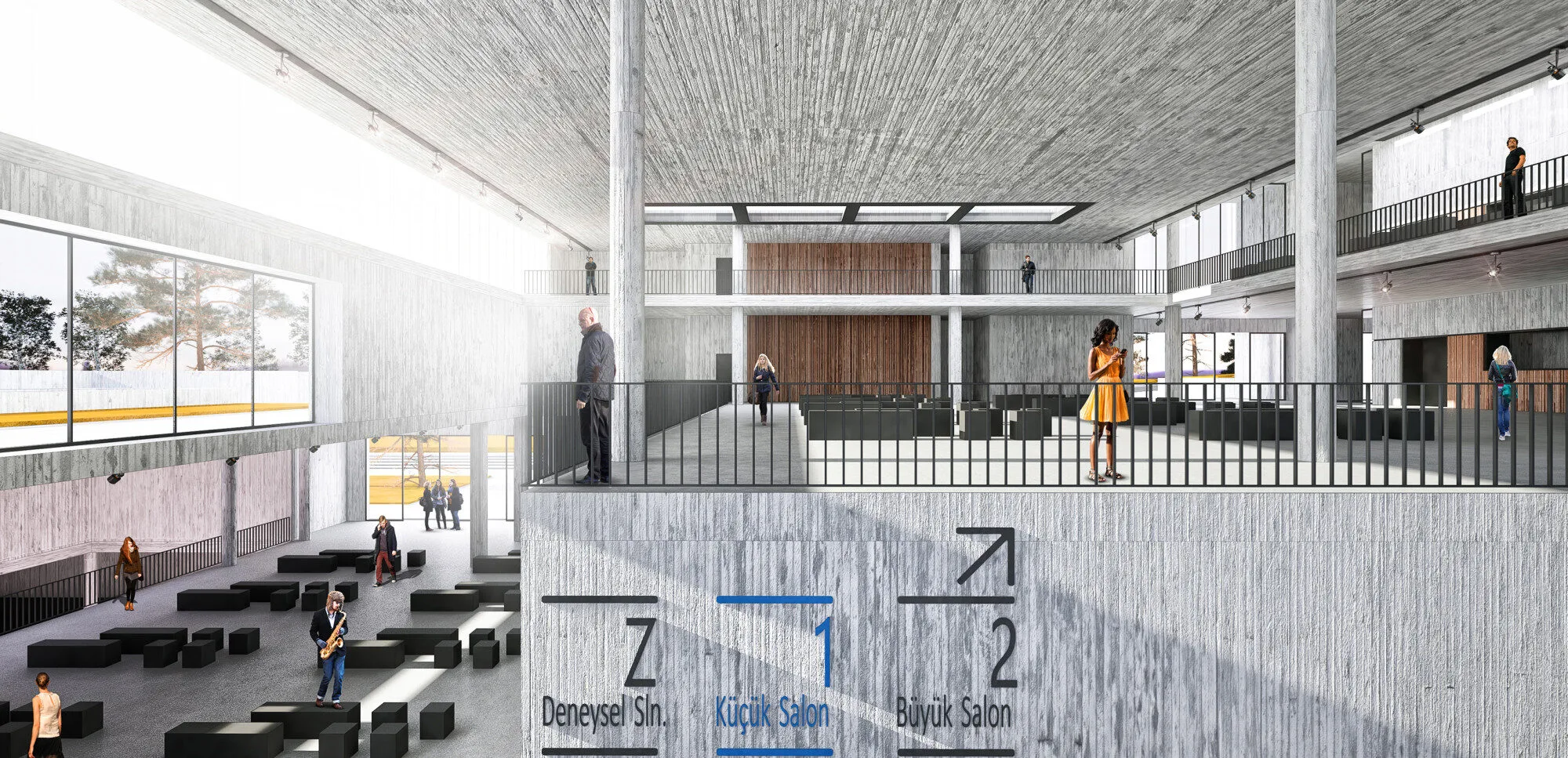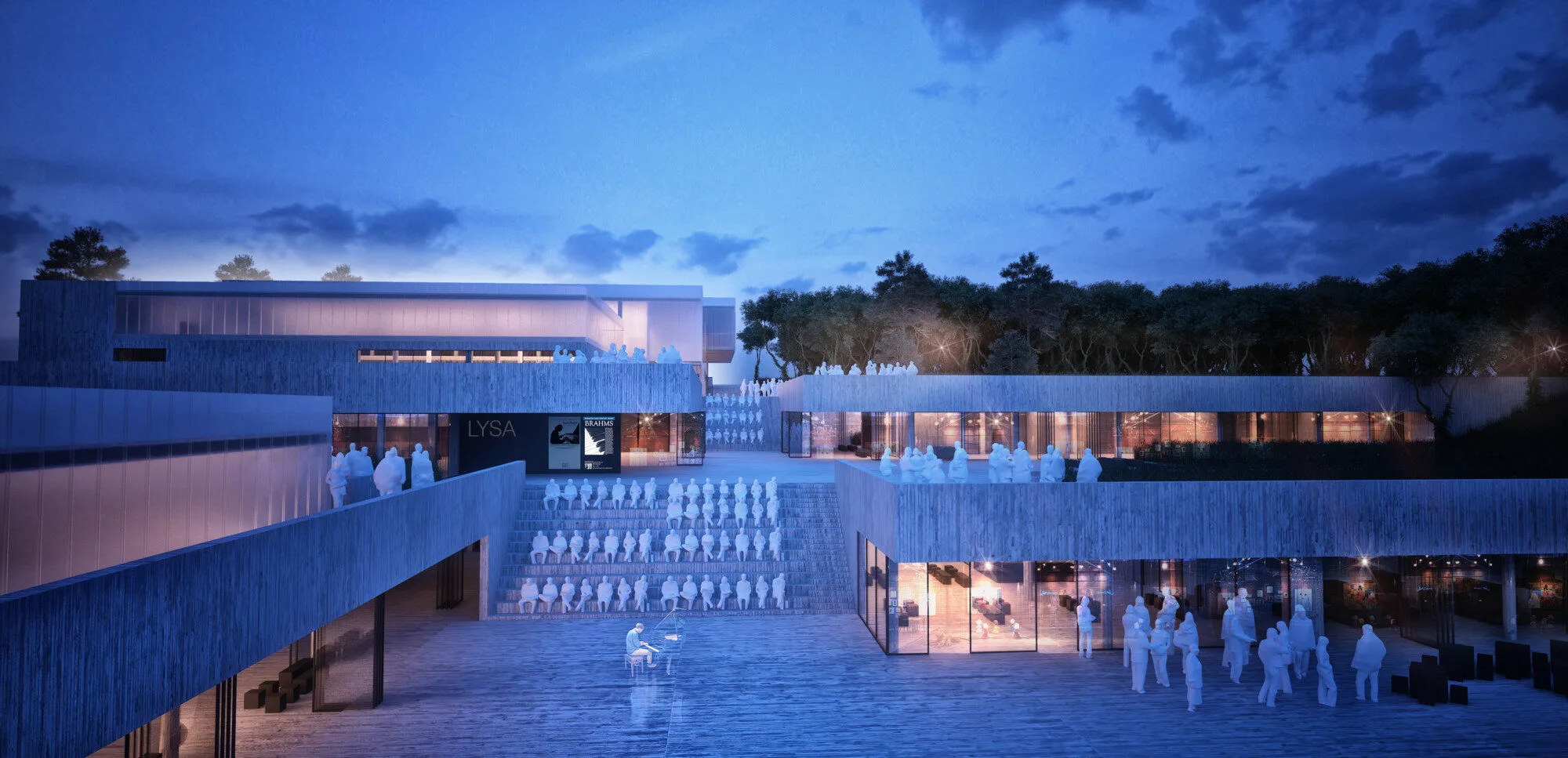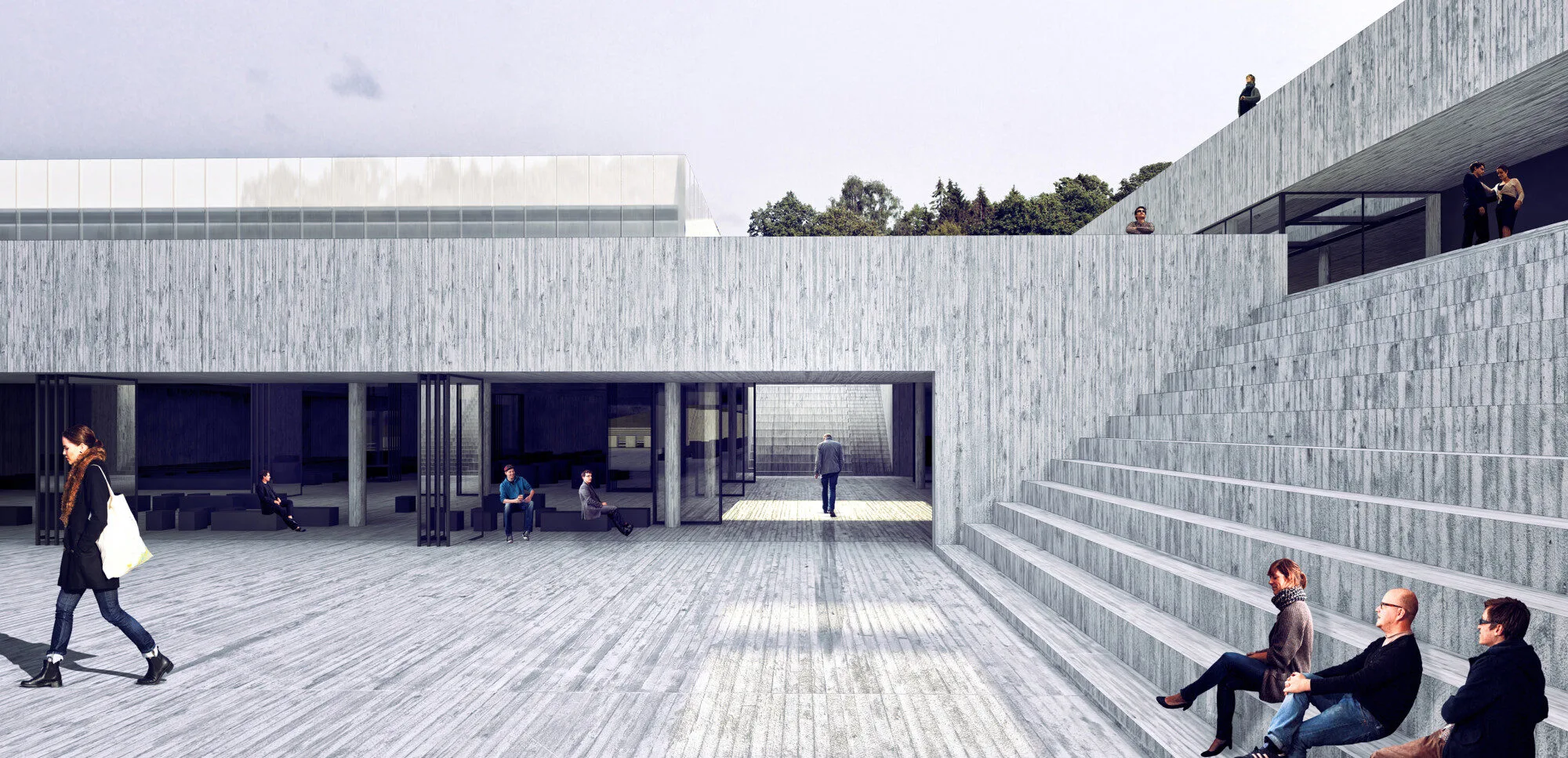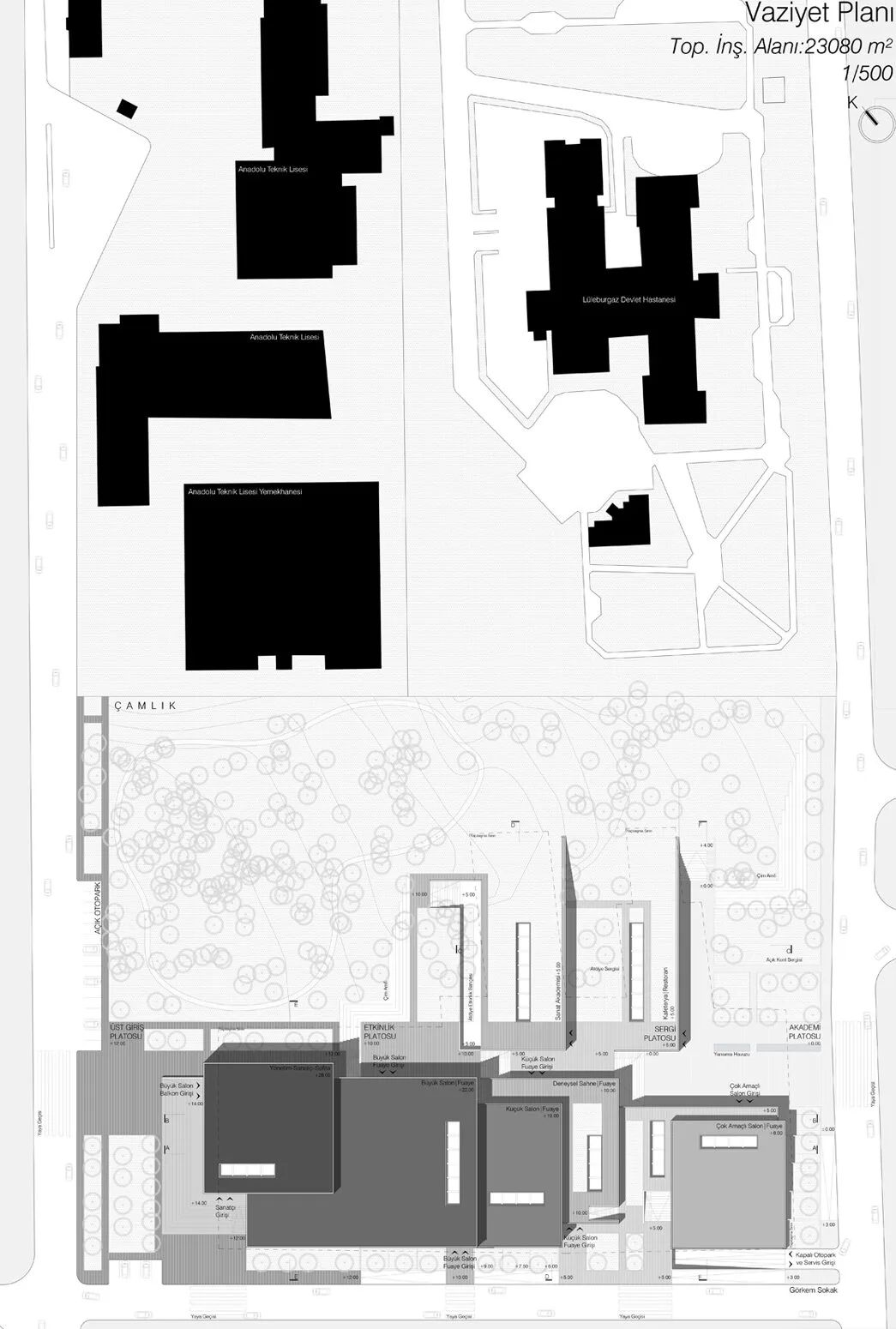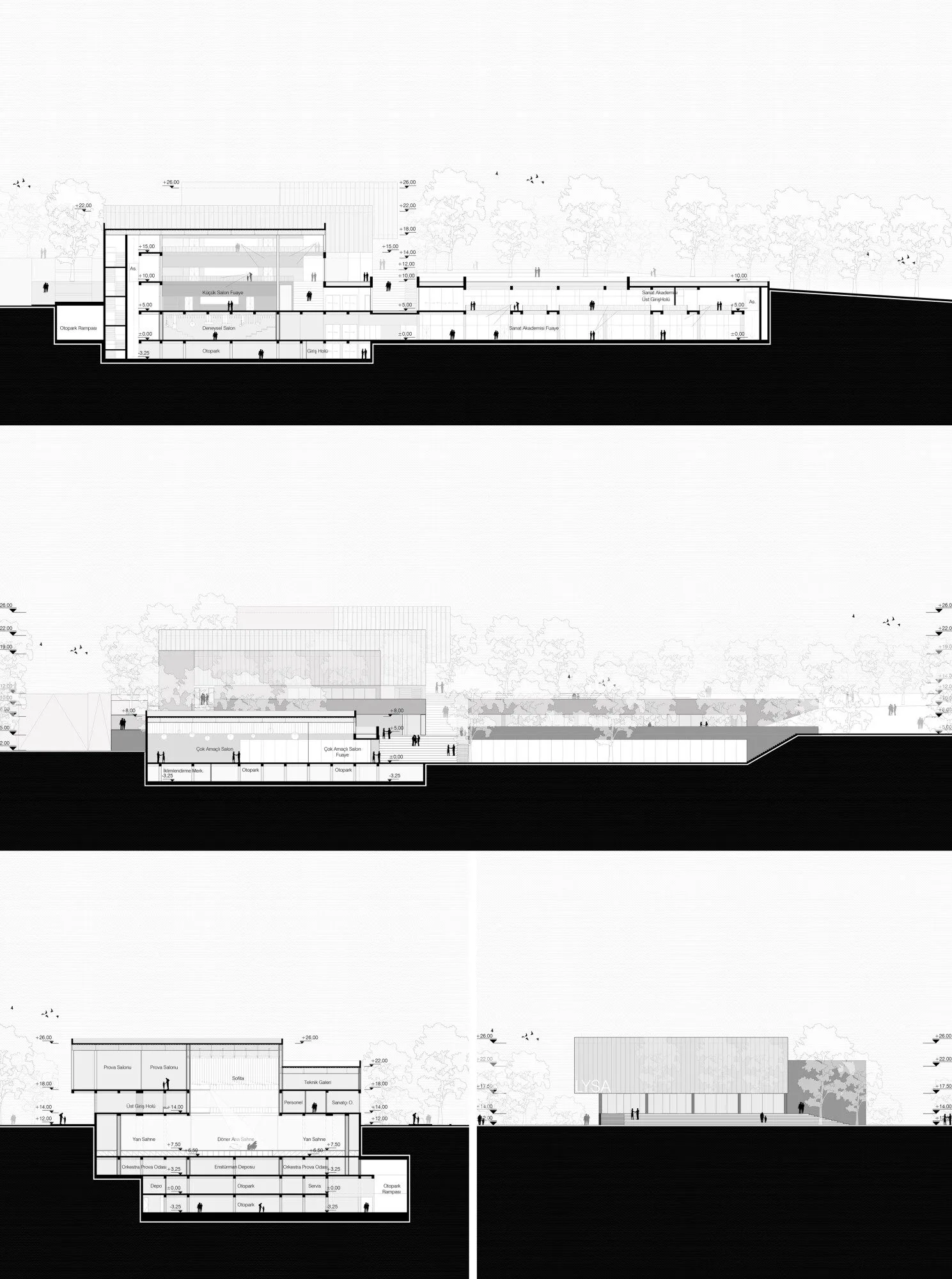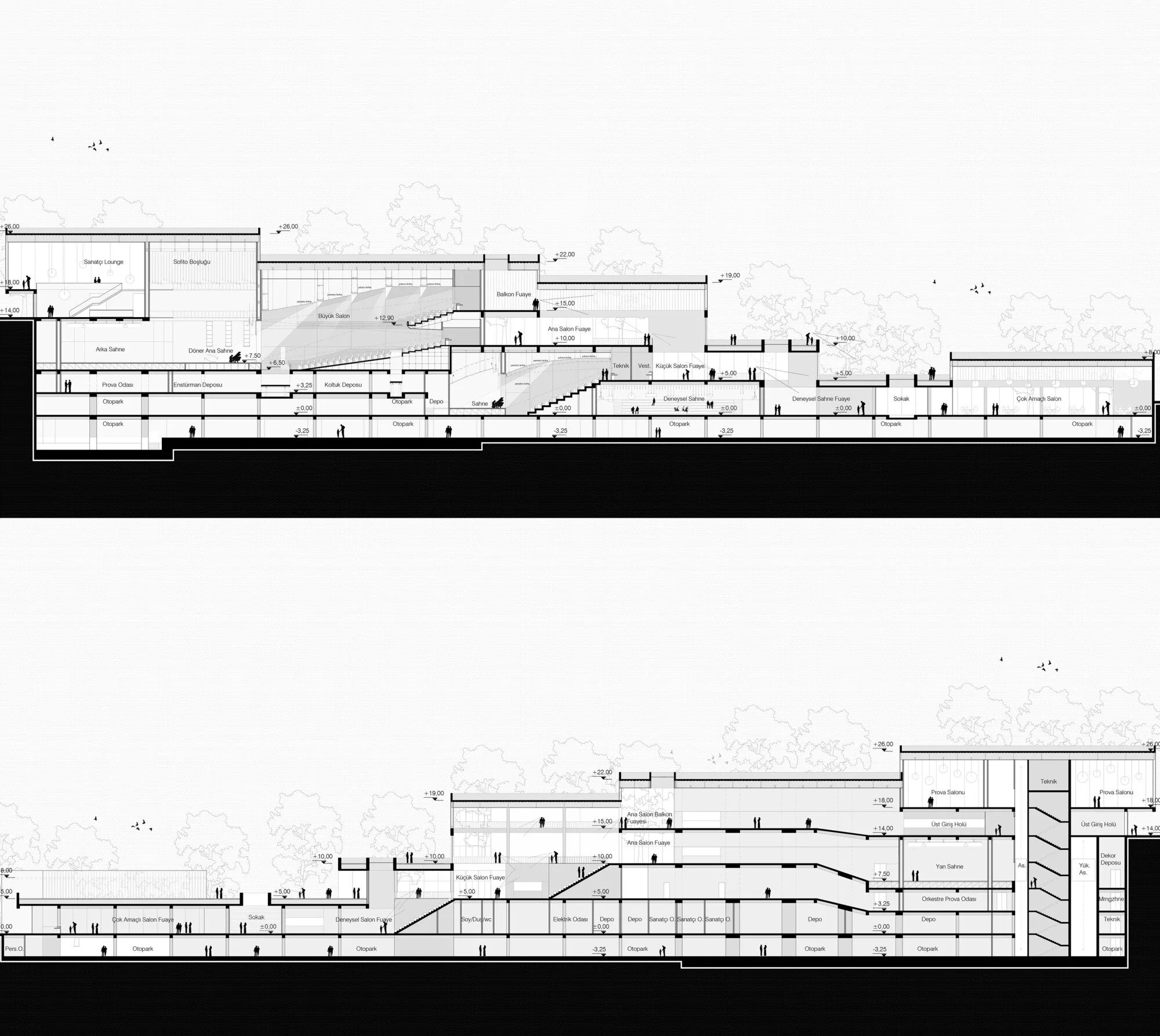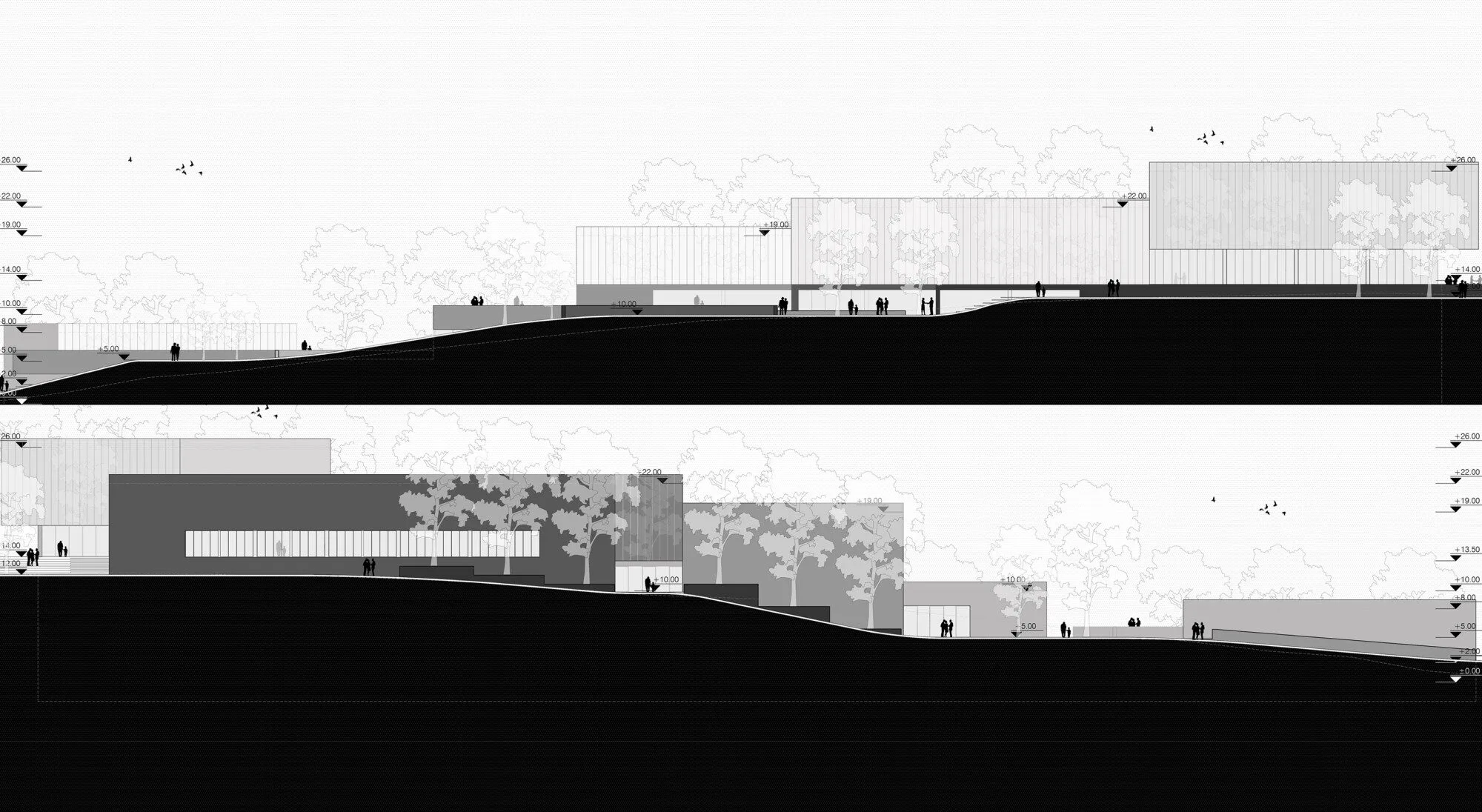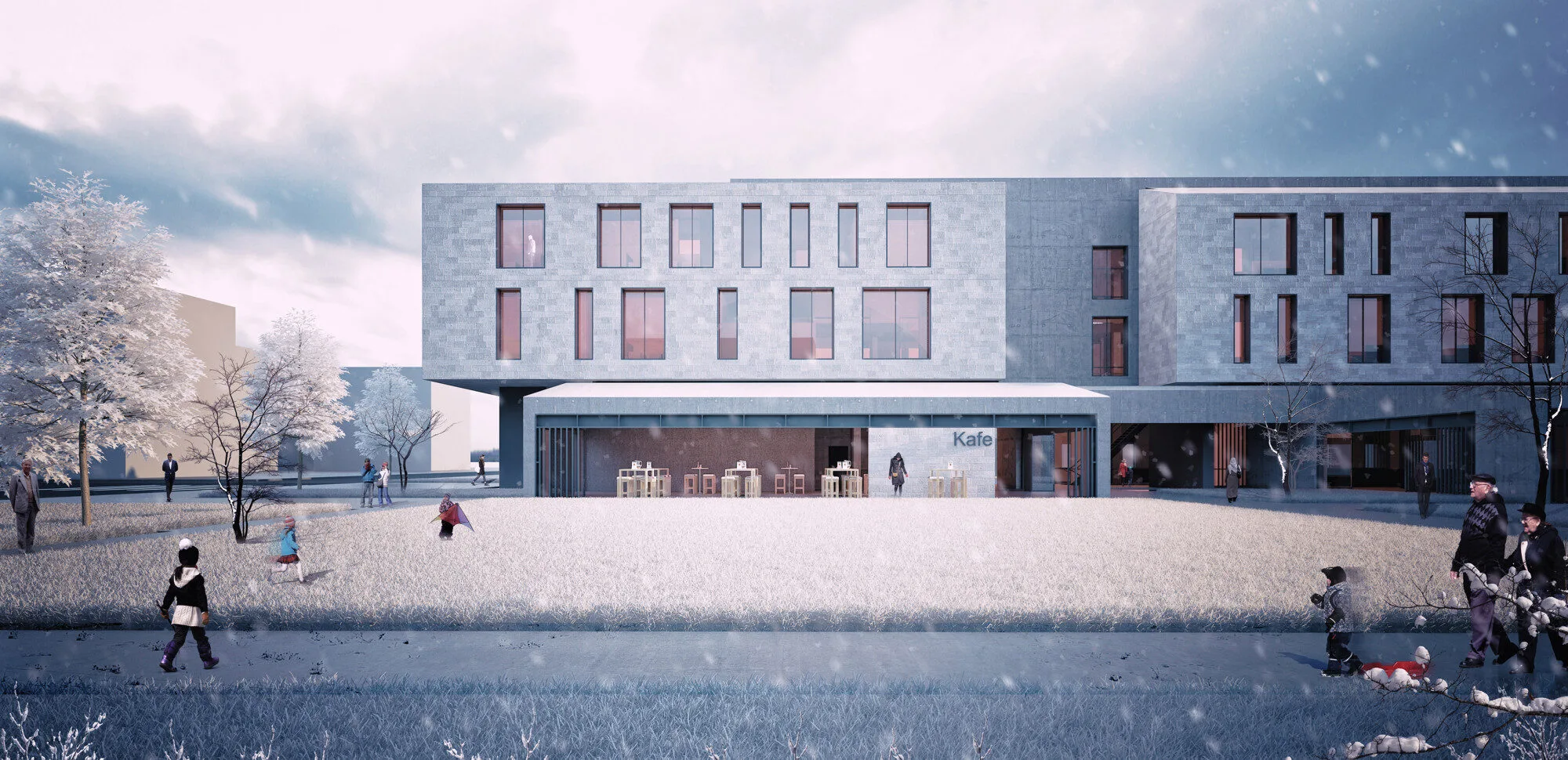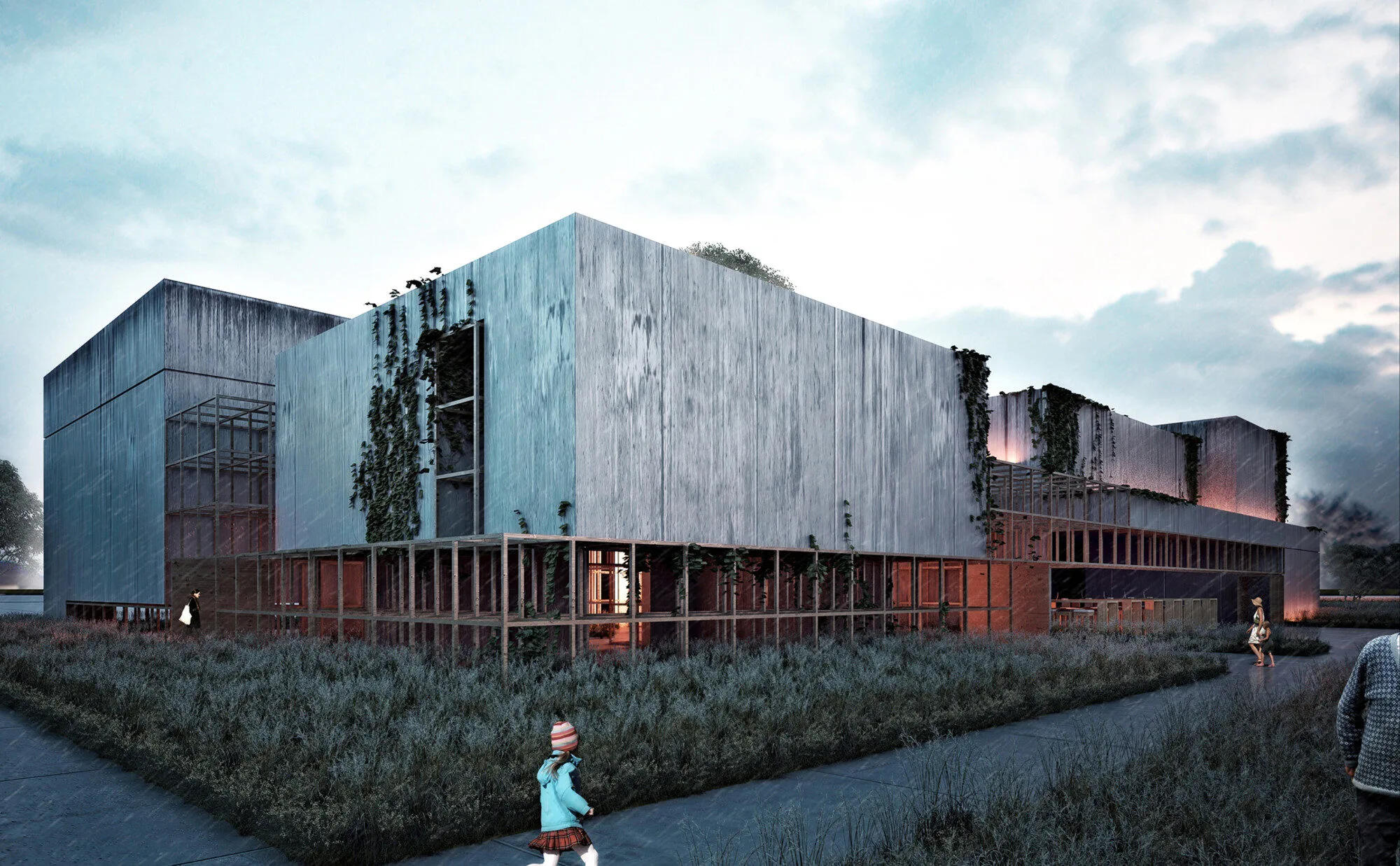
Luleburgaz Art Academy
Luleburgaz Art Academy
The competition site is strategically situated along the D-100 highway, at the junction of local access roads in Lüleburgaz, positioned on the route from Edirne to Istanbul. This area lies just outside the city center of Lüleburgaz, characterized as a recreational corridor envisioned by the local administrative unit, serving as a gateway from the direction of Istanbul. The designated design area prominently features a visible green fabric unique to Lüleburgaz, while also showcasing geographical diversity due to its sloping terrain. Any structure positioned within this locale is expected to become a symbolic entity, observable from various points within the city, despite being planned for a medium to high-density residential fabric in future urban developments. The complex architectural design proposed in the competition clusters functions with related variations, integrating open landscape areas within the same plot, thereby articulating an intersection where natural and artificial structures converge. Although the functions share commonalities, their distinct characteristics and ideals of flexible use cater to various user profiles and timeframes. The proposed architectural solution emphasizes the coexistence of these differences, aiming to create an interactive environment for users engaging with the site for various purposes.
Luleburgaz Art Academy
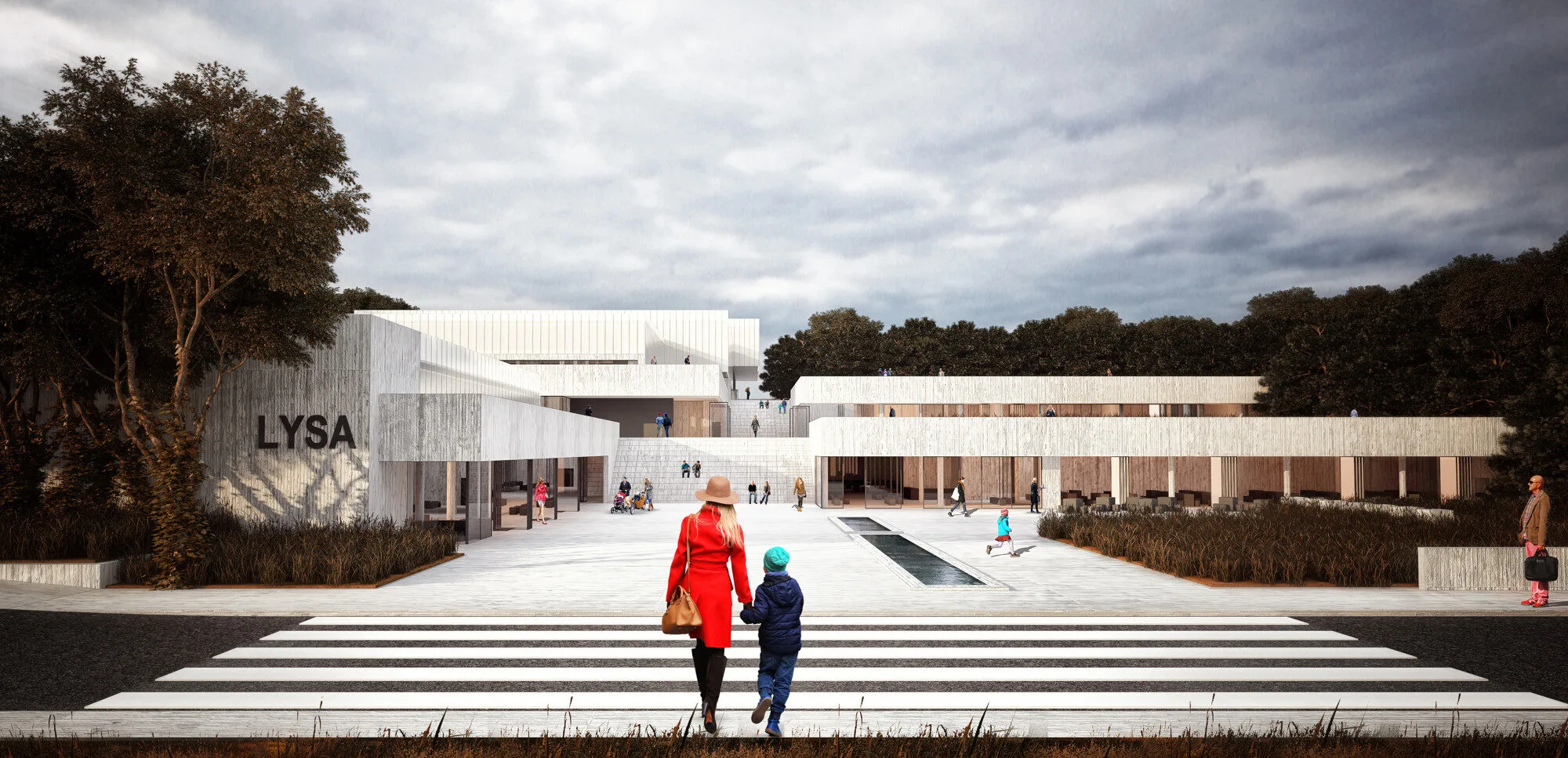
Spatial Formation
To avoid overwhelming scales that distance the building from human proportions, the program components are designed in a fragmented manner. The proposed structure for the Lüleburgaz Stars Art Academy accommodates a diverse range of functions in accordance with the architectural program. This variation in functions and flexible use invites a spectrum of user profiles and timing, which the proposed design seeks to harmonize. The eastern section of the site, known as the Çamlık Area, serves as a critical element shaping the overall configuration of the building. Another significant parameter is the slope of the terrain along the north-south axis. The fragmented design of the building is formulated in response to these two parameters. Accordingly, the site is divided into four primary levels: at the 0.00 elevation, the Academy, multipurpose hall, and performance venues; at +4.00 elevation, the small hall and various workshops; at +8.00 elevation, the main foyer of the large hall; and at +12.00 elevation, the artist and balcony foyer entrance. The separation between units allows for integrated functionality, both vertically and horizontally, facilitated by a fluid foyer arrangement. This design also strengthens the relationship between the building and the Çamlık Area.
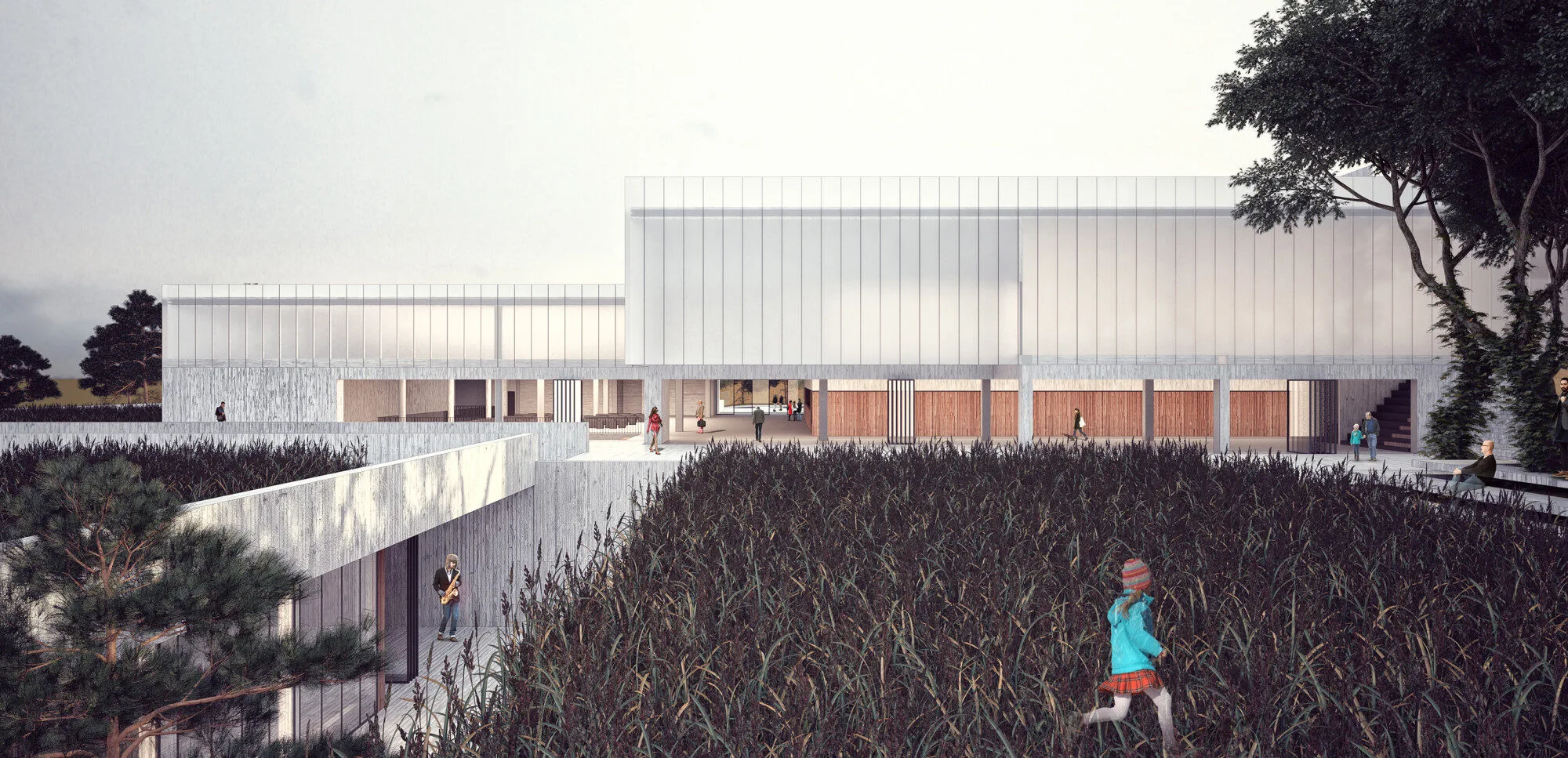
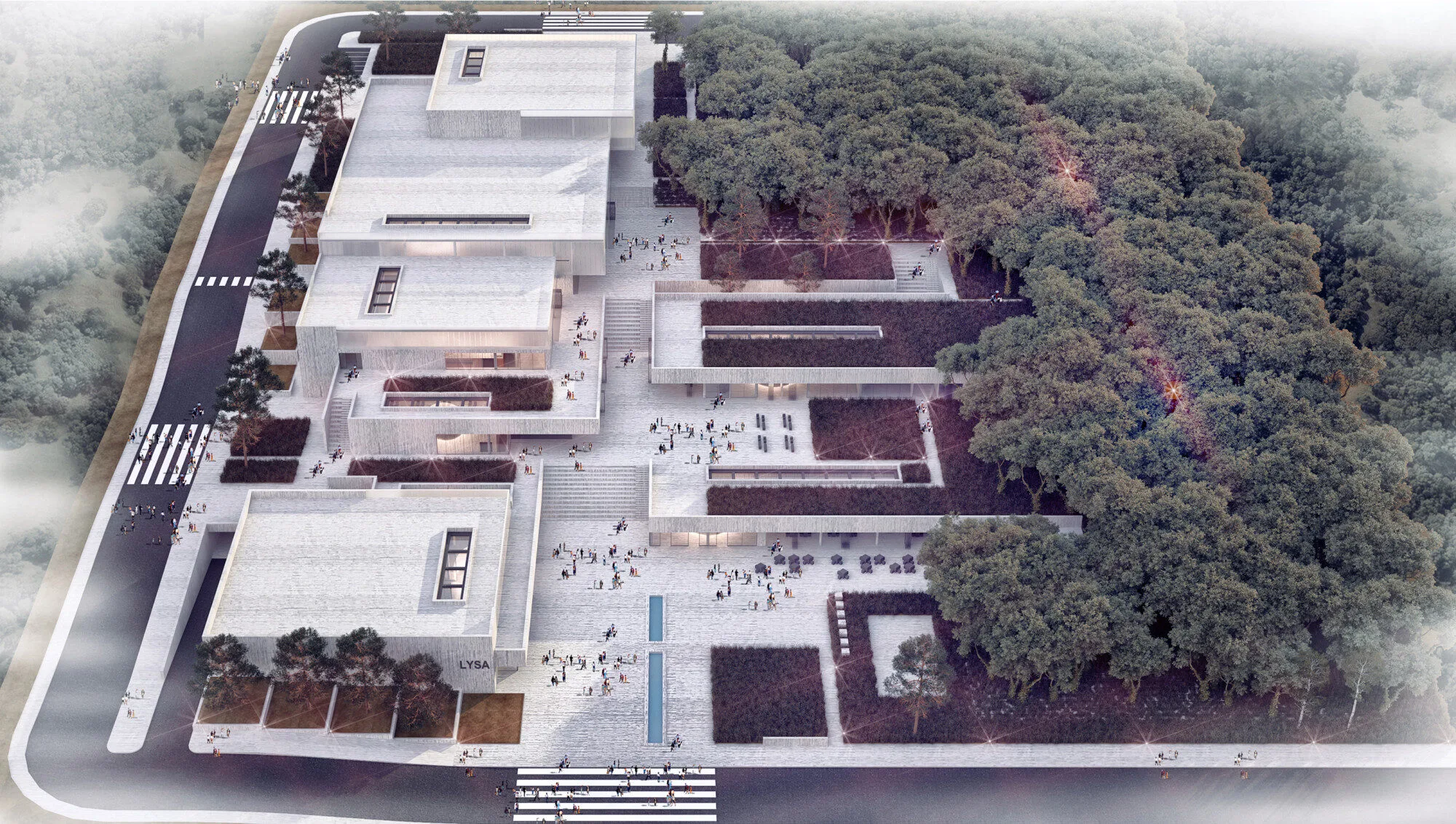
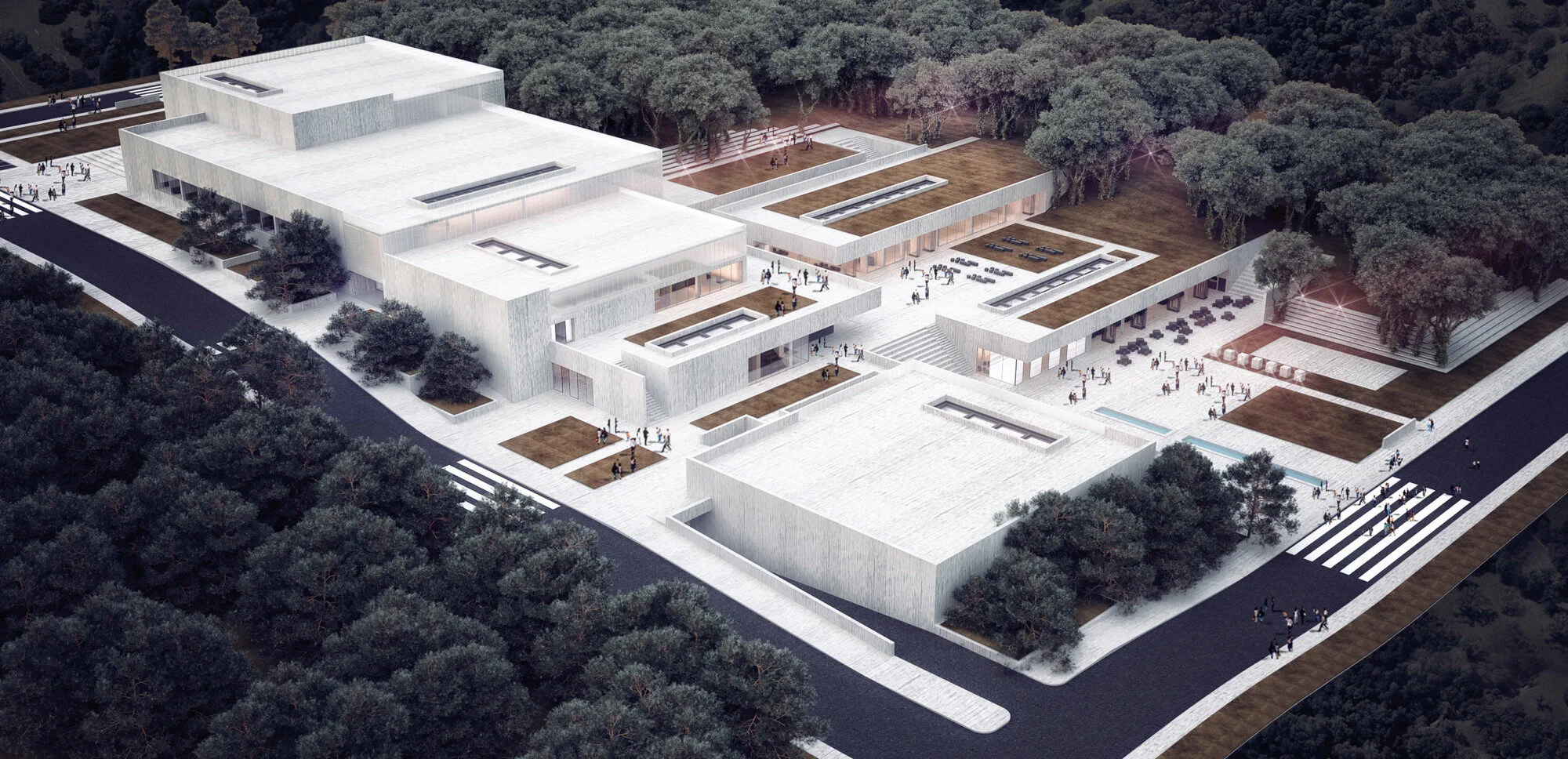
Maintaining a scale that resonates with human dimensions, the structure competes harmoniously with green landscape elements to form a tranquil architectural language. This serene language fosters a sense of calmness that complements the performative arts. The road bordering the west side of the site not only allows for service access at varying elevations but also guides urban dwellers toward the Çamlık through permeable pathways that connect to the landscape. The natural boundaries established by the Çamlık influence the form of the building in both plan and section. The large volumes required by the functions and the challenges posed by expansive surfaces have been mitigated through a fragmented approach. By examining the tree canopy and access boundaries in the Çamlık area to the east, the Academy and workshops are designed to integrate seamlessly with this region, thereby reinforcing the relationship between the structure and its natural surroundings.
